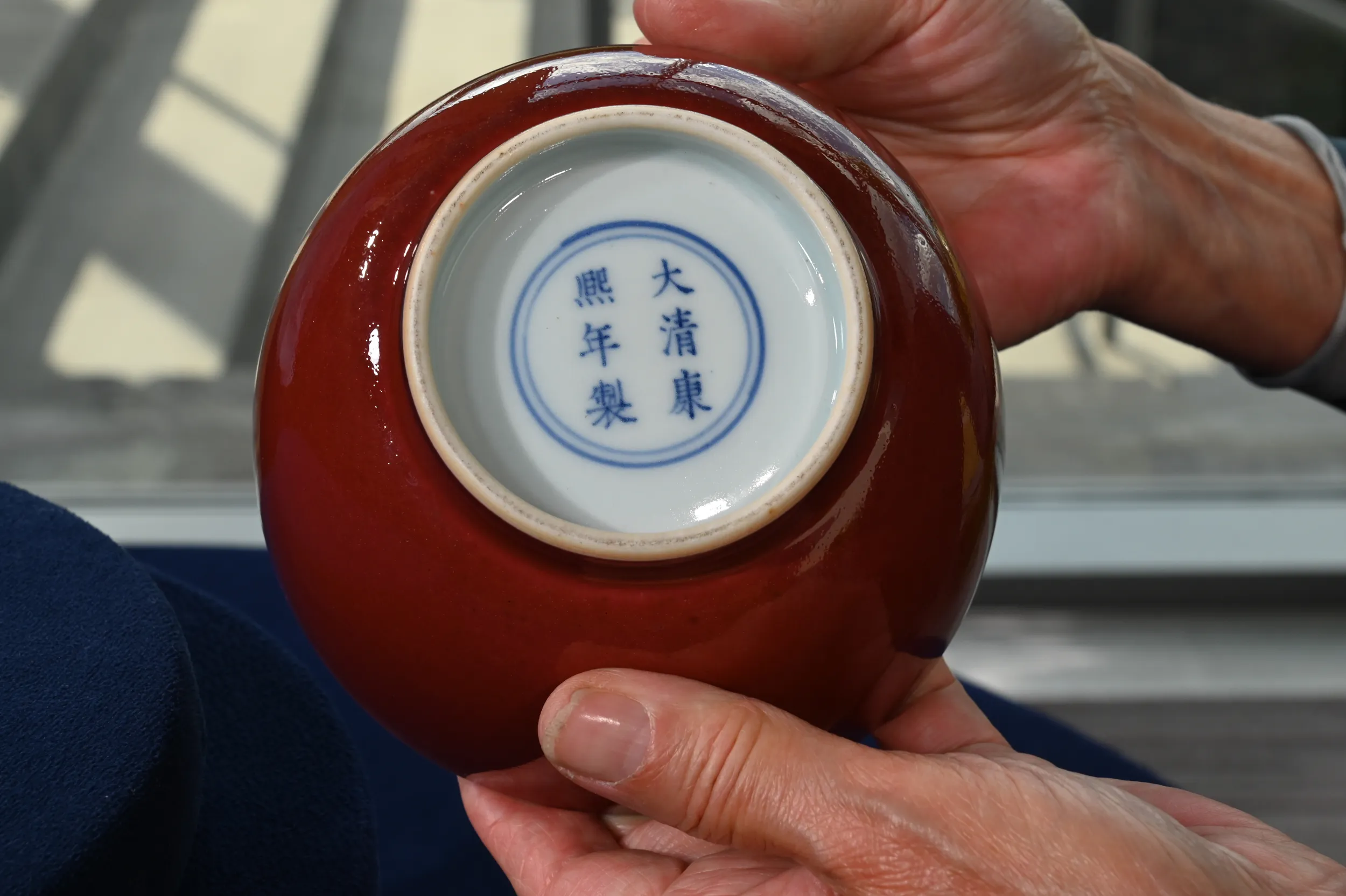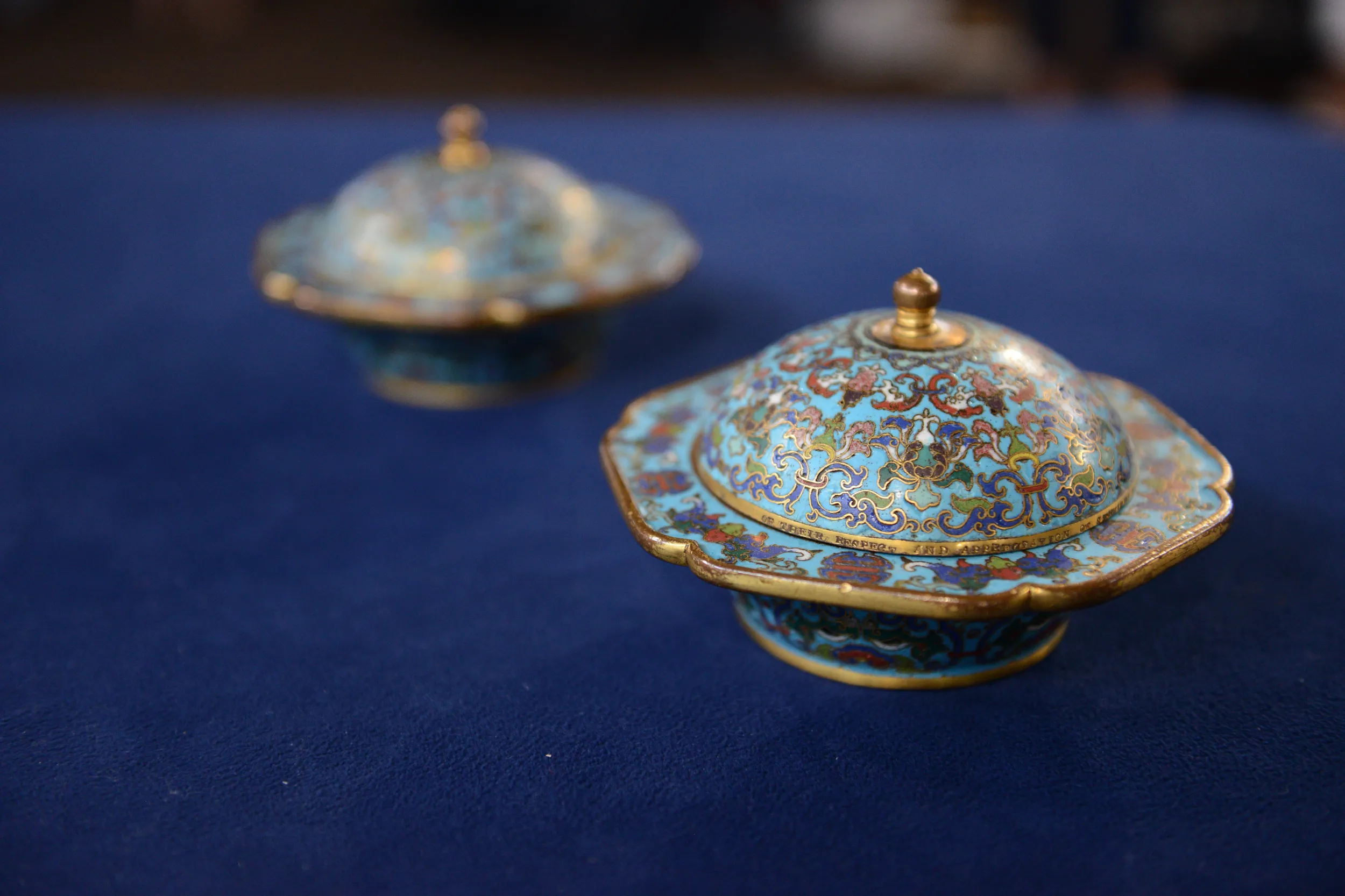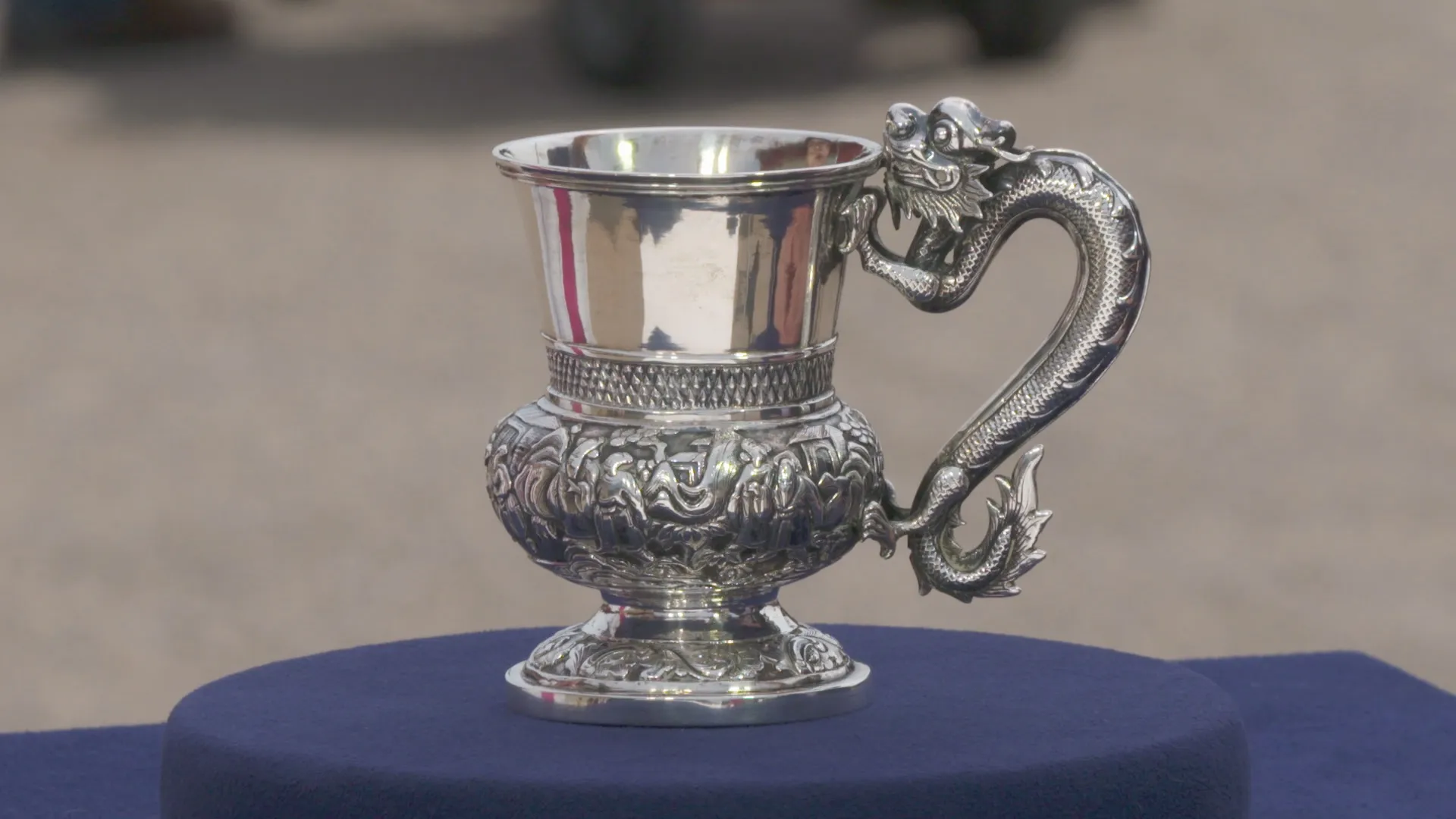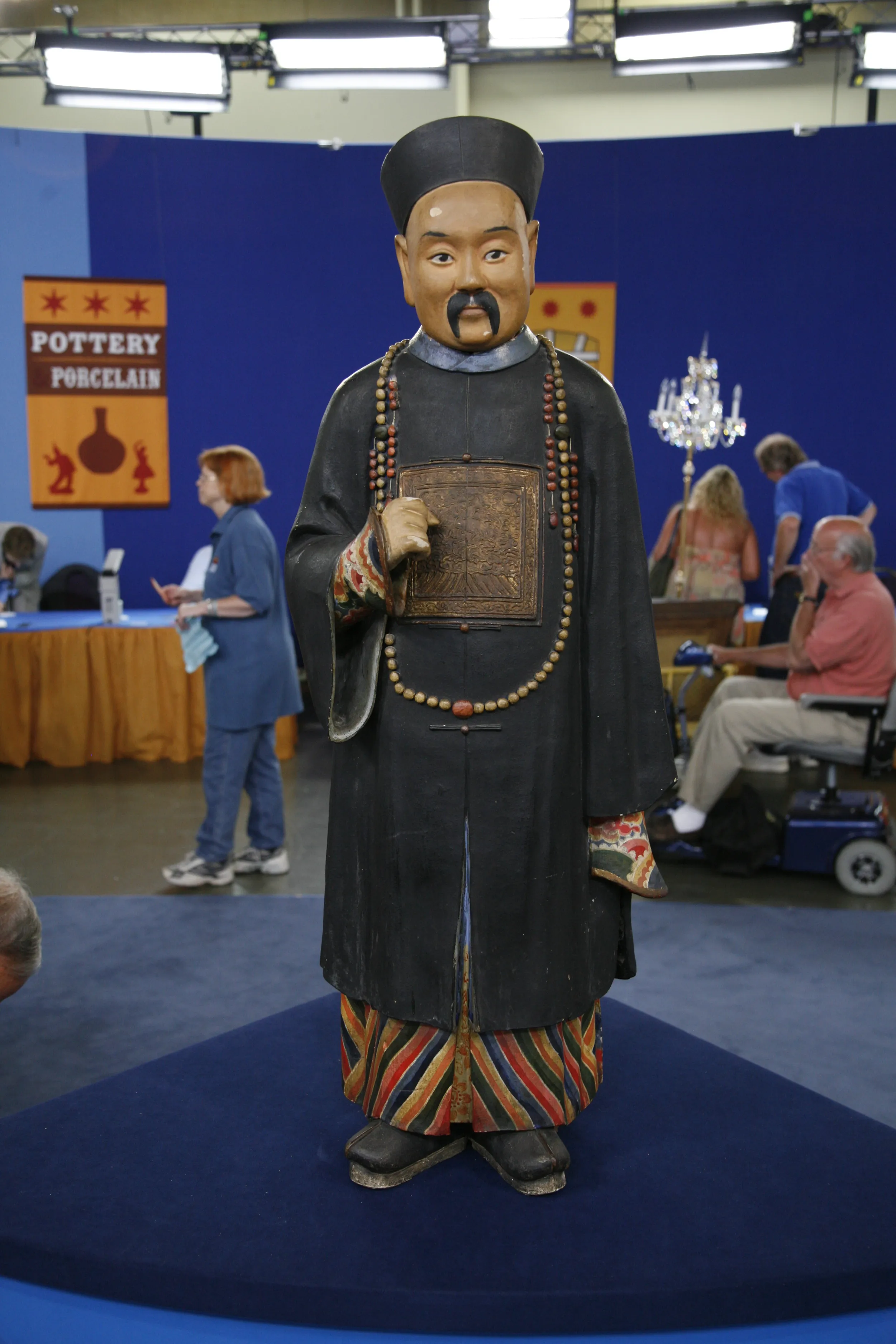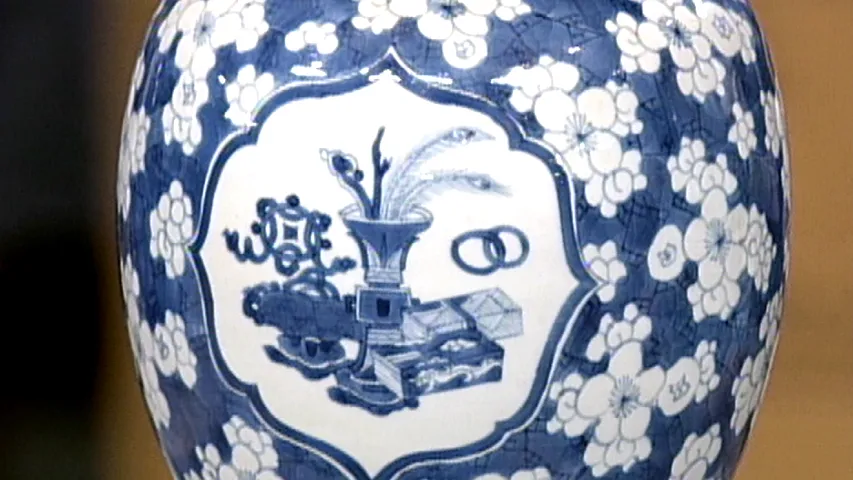GUEST: It belonged to my grandfather, who lived in Brooklyn, New York, and I think after the Second World War, had some money and he began to buy art. He had a few Old Master prints and some ceramics, and he died. And then my grandmother, I think, gave things that were more special to the Brooklyn Museum.
APPRAISER: Do you know when she gave things to the museum?
GUEST: I would say 1962 to 1967, somewhere in there.
APPRAISER: When did you inherit this piece?
GUEST: I think just 2010. And it's been sitting on a shelf, hidden out of the way, because it didn't fit with the rest of the things on the shelf, but also, it felt safer there, in, in a way. (laughs)
APPRAISER: Well, this is a Chinese porcelain bowl, and what captured my eye was, first of all, the brilliant copper-red glaze and the perfect pulling of the white on the rim, which is so beautifully controlled during the firing. It also bears a collector's label. Do you see that 275 that's there?
GUEST: Mm-hmm, yup, yup, yup, yup.
APPRAISER: Which indicates that it came from an old collection. Then, when you turn it over, you see that there's a reign mark on the underside. The reign mark reads, "Da Qing Kangxi Nian Zhi." "Made in the Qing Dynasty during the reign of the Emperor Kangxi." Kangxi reigned between 1662 and 1722.
GUEST: Mmm.
APPRAISER: Often, the reign marks on vessels and ceramics are an indication of something that is made in the style of a period. But this piece, on very close examination, was made at the Imperial Kilns in Jingdezhen. So it is what we would call a mark and period piece, which adds significant value to it, because it's not a copy.
GUEST: Mm-hmm.
APPRAISER: It's the real thing. It was made for the emperor's use, or the family's use, in the Imperial Court. All of these factors, together with the fact, and what really makes it very interesting to us, is that the shape is exceedingly rare. Most of the copper-red dishes that you see in this period have a flared rim.
GUEST: Mm-hmm.
APPRAISER: Or they're a flat sort of saucer dish. We think that this rare form was probably used in some kind of ritual...
GUEST: Mm-hmm.
APPRAISER: ...during the Kangxi period, but we don't really know what kind of ritual it would be. This is often called sacrificial red, this glaze. Just so even in color, and so absolutely beautiful. So when we saw it, our eyes sort of popped.
GUEST: (chuckles)
APPRAISER: And in looking at the examples that we found, we found only two or three that have come up recently. So if this went up for auction, it would carry a presale estimate of $30,000 to $50,000.
GUEST: (laughing): Oh, dear goodness! I w, we didn't have any idea. (laughs) I assumed it was somewhat valuable, but I had no, no idea in the world.

